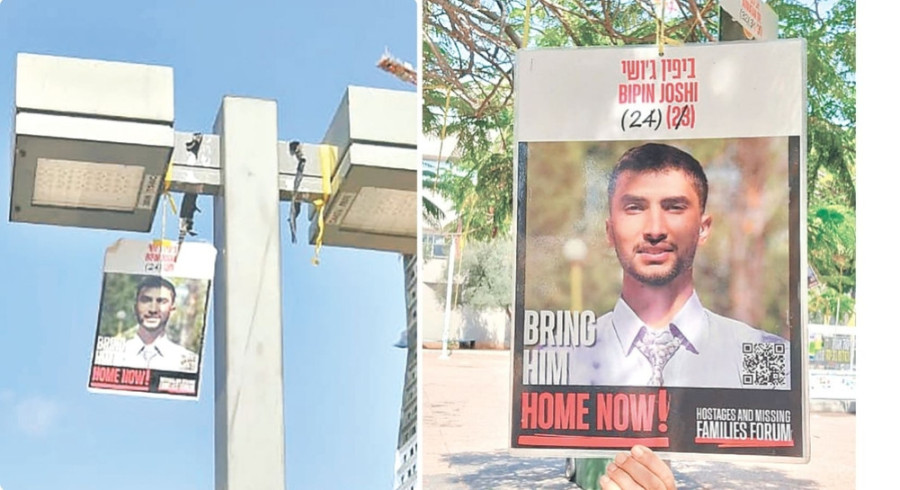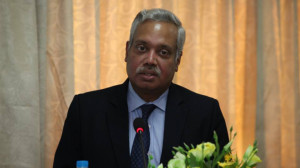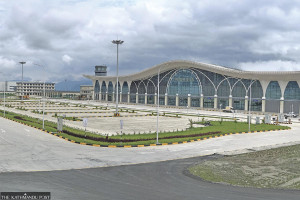National
Where is Bipin? Ceasefire raises hope for Nepali student’s return
The fate of Bipin Joshi, taken hostage during the 2023 attack, remains unclear as the hostage release deadline inches closer.
Hom Karki
In Alumim kibbutz, Israel, 23-year-old Nepali student Bipin Joshi spent an evening with friends Dhan Bahadur Chaudhary and Himanchal Kattel, singing a song about family and friends. As sweat ran down his face in the scorching heat, Joshi thought of home.
“Samjhana baanki cha, haamra ti palko
Sangai nahola tara saath sadhai bharko..”
(Memories remain of those moments of ours.
We may not be together, but the bond is always strong….)
The video of Bipin singing with Chaudhary is secure. “This song, sung in memory of our friends, captures Bipin’s life perfectly,” Chaudhary said.
Joshi, who went to Israel under the Learn and Earn Programme, was taken hostage by Hamas after the October 2023 attacks. “Where is he? We saw Hamas take Bipin, and now all we can do is wait for his return,” said Chaudhary.
On October 7, 2023, Hamas attacked Alumim, where 17 Nepalis were working with Israelis on collective farming, tending chickens, vegetables, and fruit trees. “Shots rang out early. Two Nepalis ran outside and were shot immediately. We hid in a bunker with the door open. Within minutes, Hamas threw two grenades inside. Bipin threw one out, but the other exploded inside.”
Ten Nepalis were killed, five were seriously injured, and one escaped unhurt. Bipin and a Thai national were taken by Hamas.“Bipin, wherever you are, stay safe. We will do everything to bring you back and fight for you until the end,” said Chaudhary.
Ceasefire raises hope
A recent ceasefire between Israel and Hamas has raised hopes for the release of hostages, including Bipin. Under a US-mediated peace plan, 48 hostages were to be released by Monday at noon local time. Israel estimates 20 are alive, 26 are dead, and the status of Bipin Joshi and Israeli officer Tamir Nimrodi remains unclear. Nimrodi, an Israeli army education officer, was abducted while stationed at the Erez crossing. His mother last saw him in the abduction video released publicly.
Hamas has requested additional time, claiming it could not meet the 72-hour deadline. International teams, including the Red Cross, are coordinating.
Bipin’s family remains hopeful. Apart from a video captured by Hamas in November 2023, no updates have been received. “Watching the video with my parents, we saw that my brother was unharmed. This is evidence that he is alive and that strengthens our hope,” said Bipin’s 17-year-old sister, Pushpa.
Pushpa and their mother, Padma, are in the US advocating for his release.
This is Bipin’s second video since being held. The first, released on 7 October 2023, showed him being taken to a hospital by Hamas. Following the ceasefire, his family hopes for his safe return.
The ceasefire has brought relief to nearly 5,000 Nepalis working in Israel’s agriculture and caregiving sectors. “Everyone was happy, and thousands gathered in Tel Aviv’s Hostage Square to celebrate. Now we wait for more good news: Bipin’s safe release,” said Shreekrishna Bhandari, chair of the Non-Resident Nepali Association’s Israel chapter.
The 72-hour window began Friday at noon. Israel will return deceased hostages with respect and forensic checks, while survivors will receive medical care and reunite with their families. In exchange, 1,700 Palestinian prisoners and 250 serving life sentences in Israeli jails are to be released.
Gazans return home
Two hundred troops led by the US, with soldiers from Egypt, Qatar, Turkey, and the UAE, will monitor the ceasefire without entering Gaza. Israel currently controls 53 per cent of Gaza. The US plan aims for a phased withdrawal: first reducing control to 40 percent, then to 15 percent , maintaining a security perimeter until the threat of terrorism is fully removed.
Two years of war have killed at least 67,211 people in Gaza, with over 169,000 injured. Following the ceasefire, tens of thousands displaced in Gaza City and northern Gaza have started returning home. Roads like Al-Rasid show thousands of families, including women, children, and the elderly, returning with belongings on carts, donkeys, and vehicles. Most homes are damaged, and temporary shelter, water, medical care, and safe housing remain inadequate.
Local reports indicate people are reconstructing homes using available rubble and temporary shelters. Aid agencies have highlighted that while the return is historic, urgent humanitarian support is required to address food, water, and medical needs.




 9.12°C Kathmandu
9.12°C Kathmandu















